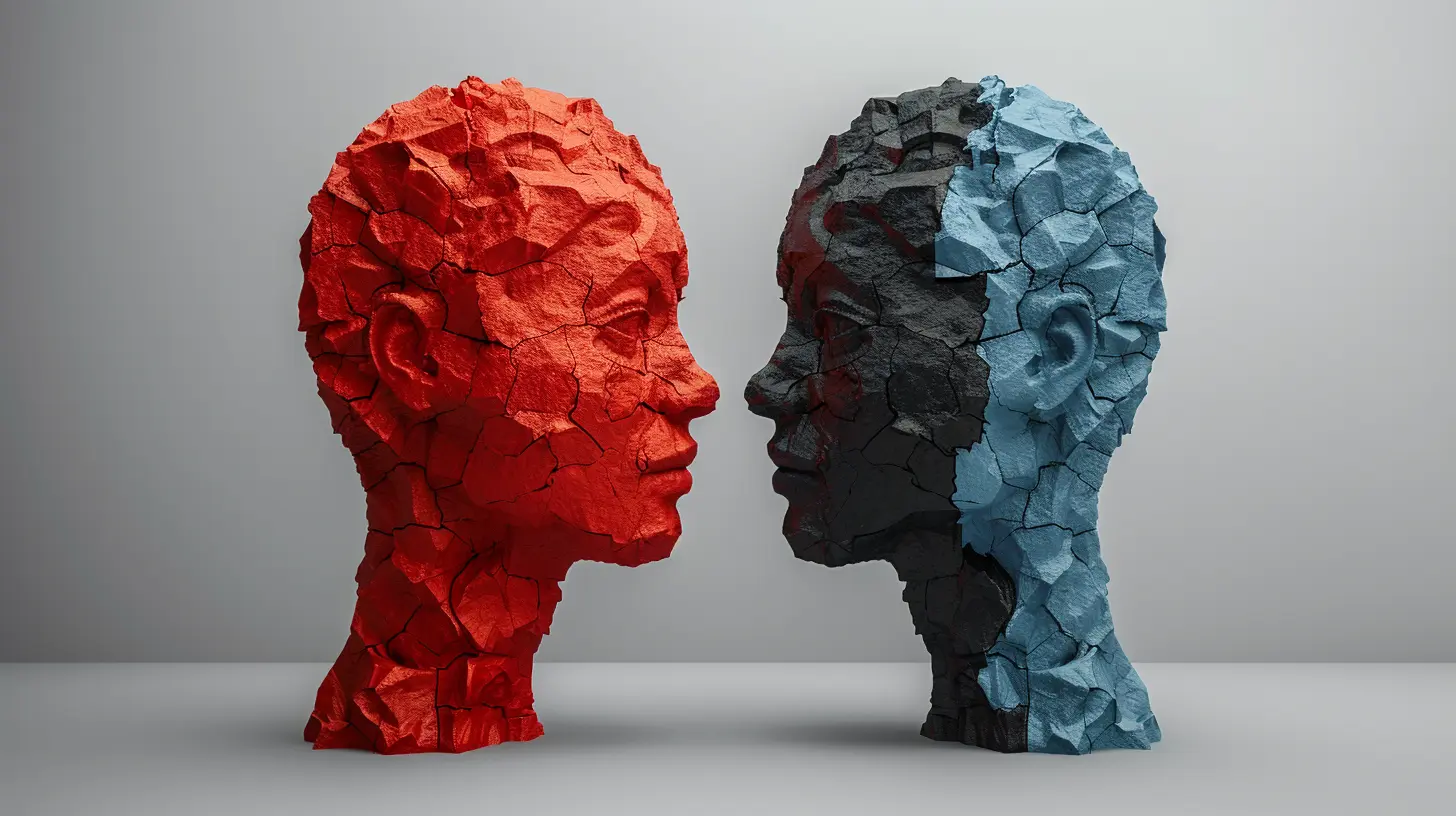How Culture Shapes Our Decision-Making Preferences
14 July 2025
Have you ever made a choice that felt totally normal to you—but baffled someone from another country? Or maybe you've found yourself struggling to understand why a friend from another culture approaches life so differently? Welcome to the fascinating world of cultural influence on decision-making.
We might like to think we’re all in control of our choices. But the truth? Culture plays a massive role in how we weigh options, assess risk, and even define what a "good decision" looks like. Let’s break this down—bit by bit—and make sense of how our cultural backgrounds subtly (and sometimes loudly) guide our choices every single day.
What Exactly Is Culture, Anyway?
Before we dive in, let’s get on the same page. What do we mean when we say “culture”?Culture isn’t just about food, music, or holidays. It’s a shared system of values, beliefs, norms, and practices. It shapes how we view the world and interact with others. It’s like an invisible script we follow—often without even realizing it.
Think of culture as the operating system in your brain. It’s always running in the background, influencing how you process information, how you feel about certain ideas, and—yes—how you make decisions.
The Psychology of Decision-Making: A Quick Recap
Now, let’s talk about how we make decisions in general. Psychologists have long studied the decision-making process. Usually, it goes something like this:1. Recognize there’s a decision to be made.
2. Weigh the options.
3. Predict the outcomes.
4. Consider your values and goals.
5. Make the call.
This all seems straightforward, right? But here’s the twist: every single one of those steps is shaped by culture. What options we consider, how we predict outcomes, what goals we prioritize—all of these are filtered through cultural lenses.
Individualism vs. Collectivism: Two Cultural Lenses
Let’s start with one of the most studied cultural dimensions: individualism vs. collectivism.In individualistic cultures (like the U.S., Canada, or Western Europe), people are raised to value independence, personal achievement, and self-expression. Decision-making in these places is often about what’s best for “me.”
Flip the coin and you’ve got collectivist cultures (like Japan, China, or many Latin American countries), where family, community, and social harmony come first. Here, decisions are often made with others in mind—sometimes even at the expense of personal desire.
Real-Life Scenario
Say you’re offered a high-paying job in another city. If you’re from an individualistic culture, you might think, “Great opportunity! I’m going to take it.” But if you’re from a collectivist background, you might think, “How will this affect my family? Will they be okay without me?”Same situation—totally different thought process.
Risk-Taking: Cultural Comfort Zones
Have you ever noticed how people from some countries seem more comfortable with risk, while others are more cautious? That’s another cultural fingerprint.Cultures vary in what psychologists call “uncertainty avoidance.” High uncertainty avoidance cultures (like Greece or Japan) tend to prefer structure, clear rules, and well-defined roles. People from these cultures might shy away from unpredictable or risky choices.
Low uncertainty avoidance cultures (like the U.S. or Sweden) are often more open to experimentation and change. They may embrace risk as a normal part of life—or even see it as exciting.
This affects everything from financial decisions to parenting styles to entrepreneurship. The same decision can be perceived as bold or reckless depending on your cultural background.
Time Orientation: Living for Today vs. Planning for Tomorrow
Here’s another cultural factor that shapes choices: how we perceive time.Some cultures are "future-oriented." They value planning, saving, and thinking ahead. Others are more "present-oriented," focusing on immediate experiences and living in the moment.
For example, in the U.S., you'll often hear phrases like "plan ahead" or "invest in your future." But in cultures like Mexico or many parts of Africa, people may prioritize enjoying life now—even if that means less financial security later.
So if you're wondering why your friend spends their paycheck as soon as they get it—or why someone else saves obsessively—it might just be a matter of cultural wiring.
Communication Style and Decision Preferences
Let’s shift gears for a second and talk about how we communicate—and how that ties into decision-making.In “high-context” cultures (like China or Saudi Arabia), communication tends to be indirect, subtle, and reliant on shared understanding. In these environments, decisions often hinge on relationships, trust, and implicit cues.
In contrast, “low-context” cultures (like Germany or the U.S.) prefer direct communication. Decisions are more likely to be made based on facts, logic, and explicit discussion.
This mix can lead to major misunderstandings in multicultural teams. One person might wait to be asked for their opinion (because speaking freely is seen as disrespectful), while another expects everyone to chime in openly.
Cultural misalignment in communication style can lead to frustrated meetings, poor decisions, and confused coworkers.
Authority and Power Distance: Who Gets to Decide?
Ever wonder why in some cultures questioning your boss is frowned upon, while in others, it’s expected?That’s power distance at work—a term that describes how comfortable a culture is with unequal power distribution.
In high power-distance cultures (think Russia, India, or the Philippines), hierarchy matters. Decisions are often top-down, and challenging authority may be viewed as rude or rebellious.
In low power-distance cultures (like Australia or Denmark), everyone’s input is valued, regardless of rank. Decisions tend to be more democratic.
This affects how decisions are made at work, in families, and in schools. Whether you're expected to “just do as you're told” or ask “why?” depends a lot on where you’re from.
Emotion and Decision-Making: Culture Affects That Too
Okay, we all know emotions play a role in decisions. But did you know that even how we express and interpret emotions is culturally influenced?For example, Western cultures often prioritize individual emotional experience—“How do I feel about this?” Meanwhile, in many Asian cultures, there’s more emphasis on maintaining harmony, which can lead people to suppress personal feelings if they might cause conflict.
So when making decisions, someone from one culture might think, “This feels right to me,” while someone else wonders, “Will this upset the group?”
It’s not that one is wrong and the other right—it’s just different ways of valuing emotions in the decision-making equation.
The Role of Religion and Tradition
You can’t talk about culture without mentioning religion and tradition—two powerful forces that shape how people think about choices.In many cases, religious beliefs provide a framework for what's right or wrong, acceptable or taboo. Certain decisions—like whom to marry, whether to drink alcohol, or how to raise children—aren’t just personal preferences. They’re guided (sometimes strictly) by religious or traditional norms.
Even if someone doesn’t consider themselves religious, growing up in a culture rooted in religion can still shape their moral compass and influence how they approach complex life decisions.
Multicultural Minds: The Hybrid Advantage
So what happens when someone is exposed to multiple cultures? Say, a kid raised by Indian parents in the UK, or a Spanish-speaking child growing up in the U.S.?These multicultural individuals often develop what psychologists call “cultural frame-switching.” That means they can shift between different cultural perspectives depending on the situation.
It’s kind of like being bilingual—but with values and mindsets. These people may be more flexible in their decision-making, able to adapt, switch gears, and consider multiple angles.
That’s a serious superpower in our increasingly global world.
How Does This Play Out in Real Life?
Let’s bring this all home with a few examples.- In business negotiations, Western leaders might drive toward speedy decisions and contracts, while their East Asian counterparts prioritize relationships and may view rushed decisions as reckless.
- In healthcare, patients from different cultures may make medical decisions based not just on facts but also on faith, family, or traditional healing practices.
- Even in dating or marriage, cultural values play a huge part in decisions around love, family roles, or acceptable age differences between partners.
Understanding these differences isn’t just interesting—it’s essential for empathy, better communication, and smarter decision-making.
So, What Can You Do With All This?
Great question.Here are a few ways you can put this knowledge to work:
- 🌍 Be culturally curious. Ask people about their values and traditions. You’ll be amazed what you learn.
- 🤝 Don’t assume your decision-making style is “normal.” It’s normal… for your culture.
- 🧠 Pause before judging someone’s choices. Their decisions might make perfect sense from their cultural perspective.
- 📘 If you lead a team or work globally, invest time understanding cultural decision-making styles. It'll save you plenty of confusion and miscommunication.
Final Thoughts
Culture isn’t just the backdrop of our lives—it’s the engine quietly steering our decisions. From choosing a career to ordering dinner, the cultural values we’ve absorbed shape nearly everything. The beauty of it? Becoming aware of these influences gives us the power to make better, more conscious choices—not just for ourselves, but in our interactions with others.We all carry invisible cultural maps. The more we understand those maps—our own and others—the more prepared we are to navigate this diverse, interconnected world.
all images in this post were generated using AI tools
Category:
Decision MakingAuthor:

Matilda Whitley
Discussion
rate this article
1 comments
Norah Young
This article beautifully highlights the profound impact of culture on our choices. Understanding these influences fosters empathy and awareness, reminding us that our decisions are often shaped by the diverse backgrounds we each come from.
July 29, 2025 at 4:38 AM

Matilda Whitley
Thank you for your insightful comment! I'm glad you found the article resonant in highlighting the importance of cultural influences on our decision-making.


